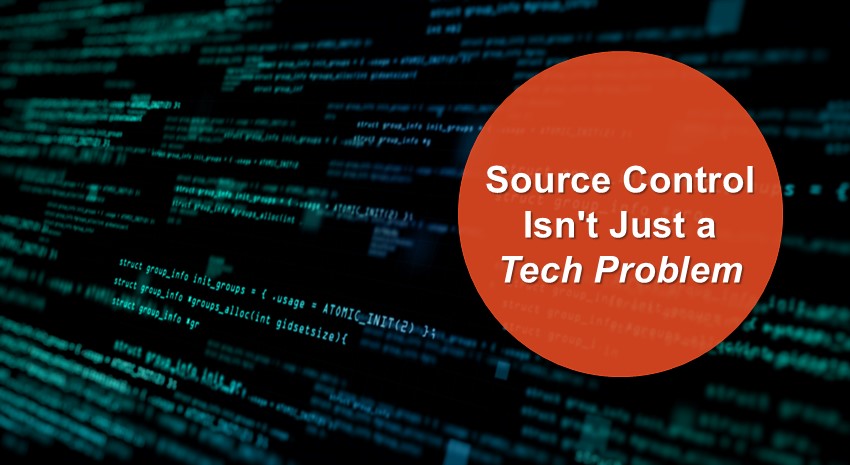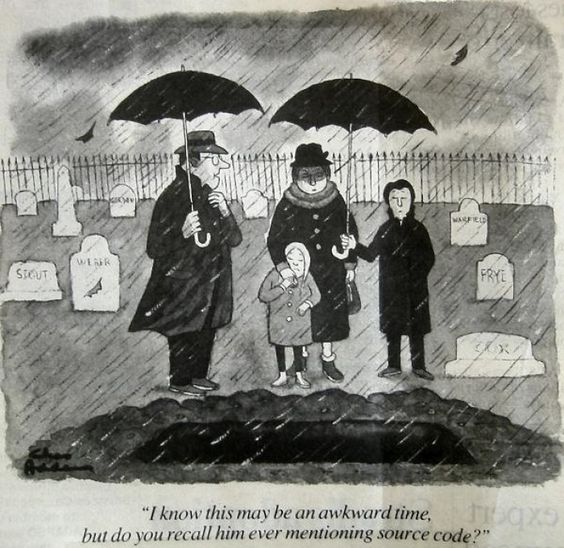Do You Know Where Your Source Code Is? How Source Control affects your entire business

Source Control Isn’t Just a Tech Problem – It’s a Business One
Custom development in Microsoft Dynamics 365 Business Central isn’t bad — it’s often what makes the system truly work for your unique business requirements. Whether you’ve added custom reports, integrations, or automation tailored to how your company operates, those customizations in Business Central are part of your competitive advantage.
But that advantage can quickly become a liability if you don’t have access to the source code behind it.
We’ve seen too many companies caught off guard when something breaks, someone leaves, or a partner relationship ends — and they realize they don’t actually have what they need to move forward.
So, let’s talk about why managing your source code matters, even if you never plan to write any of it yourself.
What is source code control?
In almost every business software application, there are two forms of code: Source code and some form of compiled code.
Source code is the original computer instructions written by humans using text and symbols, often using a programming language like C++, C#, Java, AL, Python, and many others. The significant thing about source code is that humans can read it, add comments, and make changes to the coding logic easily.
Once the source code is ready for production, it is compiled, meaning it is translated into executable instructions that can be run directly by the computer. Compiled code is extremely complicated to decompose and edit if a problem arises or additional changes are needed.
In short, source code is what developers create. Compiled code is what computers use to run your software products.
Source control (or version control) is a system that helps software development teams manage, track, and protect their source code as it evolves. Source control performs many vital functions:
- Track changes to code over time – developers can see what has been changed and why.
- Work together safely – allows multiple developers to edit the same code without stepping on each other’s toes.
- Fall back to a previous version if needed – provides the ability to go back to an earlier version that worked in case something breaks because of a new addition to the code.
- Test and experiment – eliminates the concern of corrupting up the primary source code to test new approaches or add new features.
- Create branches – allows development teams to split the code into multiple versions for different offices or companies.
Most source control repositories also allow developers to associate additional code libraries and supporting elements with the source code, making it easier to recompile the code and recreate previous versions at any time.
Setting up a source control environment ensures that all developers have access to the current and all previous versions of the source code, allowing them to make changes as necessary.
Why is having access to source code important if I’m not a developer?
1. If you can’t access your code, you don’t really own it
In Business Central, most customizations are deployed as Per Tenant Extension (PTE) apps that are specific to your environment.
You can usually download the source code for those extensions directly from the Extension Management page — but not always. Some partners disable that option. Others install compiled versions only. And sometimes, the code you get is incomplete or difficult to understand without documentation.
That means if you don’t already have your code backed up, and your partner disappears or won’t cooperate, you’re stuck.
2. A good partner plans for collaboration — not control
Even if you don’t plan to perform development in-house, your partner should make it possible for you to:
- Hire your own developer later
- Co-develop a solution together
- Audit what’s been built for clarity and confidence
- Onboard a new partner when needed
If they can’t (or won’t) provide access to the code, version control, or a shared development plan, then the solution isn’t truly yours — and your future flexibility is at risk.
A strong partner helps you grow into ownership; they don’t hold it over your head.
3. Don’t wait until an emergency to transfer your code
We’ve seen customers wait until something breaks — or until they need a change — to ask for their source code after switching partners. By then, it’s far too late.
The time to get your code is before the partnership ends.
Once you’ve made the decision to change partners, the very next step should be ensuring you’ve got all your source code in hand and in a safe, version-controlled location.
4. Even if you never plan to use it, you still need it
We’ve seen customer developers retire, leave the company, or — sadly — pass away. We’ve seen freelancers lose laptops. We’ve seen source code trapped in someone’s email inbox or on a USB stick no one can find.
These things happen more often than you think.
That’s why you need the source code, even if you’re not using it right now. It protects you from:
- Vendor lock-in
- Developer unavailability
- Missed upgrade windows
- Major project delays
5. Check your contract: Who really owns the code?
You might assume that, since you paid your partner to develop custom code, you own the rights to it as a work for hire. But just because a solution was built for your business doesn’t mean you automatically own it — or even have the right to use it freely.
We’ve seen partner contracts that:
- Limit your ability to use the code with anyone else
- Charge extra fees to access source code after deployment
- Claim intellectual property rights even for custom functionality built specifically for your processes
These restrictions aren’t always obvious. They might be buried in standard Master Services Agreements (MSAs) or assumed to be “industry norms.” But they can seriously limit your flexibility, especially if you decide to change partners or bring development in-house.
If your contract doesn’t spell it out, ask your partner to clarify — and ideally, update the agreement before problems arise.

Bonus: Ask these 5 questions right now
Whether you’re developing with a partner or just running Business Central with a few tweaks, make sure you get straight answers from your partner on the following questions:
- Can I get the complete source code for all my PTEs today?
- Where is the code stored, and how is it versioned?
- What happens if I change partners or bring in another developer?
- What’s our plan if the person who knows the system best isn’t available tomorrow?
- Are we allowed to take our solution to a different partner if we ever need to?
Final thought: Source code is business insurance
Access to your source code isn’t just a concern for developers — it’s a business continuity issue. It’s what allows you to change direction, recover from mistakes, and keep running when things go sideways.
You may never open the files. You may never write a line of AL. But knowing you can — and having everything ready when you need it — is one of the smartest things you can do as a Business Central customer.
Control your code and own your future.
Questions? Contact ArcherPoint by Cherry Bekaert for answers about who owns your custom code.
Trending Posts
Stay Informed
Choose Your Preferences
"*required" indicates required fields
